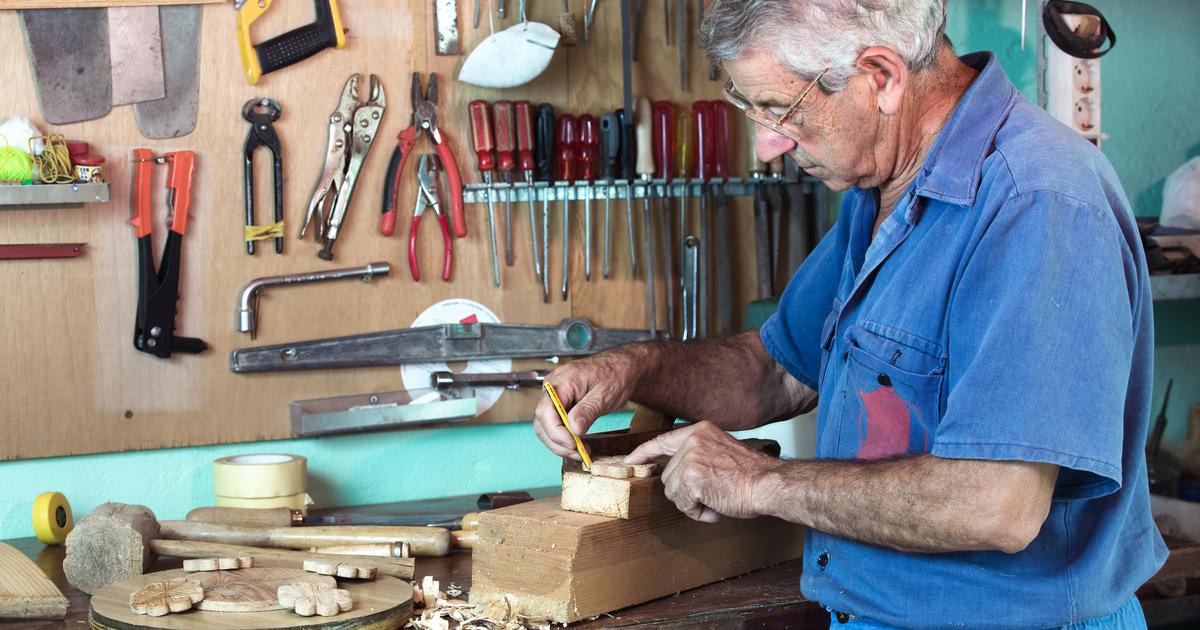Choosing the right workbench can greatly influence the quality and efficiency of your work and renovation projects.
Among all the models available in DIY stores, which type of workbench should you choose according to your needs and your budget?
Discover the criteria to take into account before choosing the ideal workbench to effectively organize your workspace.
To discover
February: what vegetables and fruits are in season?
What is a workbench?
The workbench offers an ergonomic and secure work surface for DIY enthusiasts.
This workshop furniture dedicated to DIY accommodates all tools, small or large, and allows you to store them in a simple and orderly manner.
Its stable surface guarantees comfortable work and allows it to support heavy loads, thus surpassing a simple board on trestles.
In addition to holding parts firmly, it serves as convenient storage for tools and hardware.
This essential piece of equipment in workshops and garages comes in different forms, with or without drawers, adapted to the varied needs of amateur DIY enthusiasts and experienced craftsmen.
What type of workbench to choose?
Choosing the right workshop workbench will depend on your specific needs.
Please note that there is a wide variety of workbenches, in different models and formats.
Each has distinct advantages and disadvantages:
The carpenter's workbench:
based on a solid wood top and a wooden (beech, oak) or metal (galvanized steel) base, the carpenter's workbench offers a large and stable work surface.
Equipped with practical storage, it however has the disadvantage of its heaviness, requiring a sturdy floor to support its impressive load and preventing it from being moved at will.
The fixed metal workbench:
also known as the mechanic's workbench, it has a steel structure making it very resistant.
Well suited to humid environments, it offers stability and durability.
However, its composition can pose allergy problems (especially those based on nickel), and the material is neither eco-responsible nor biodegradable.
The rolling workbench
: the rolling workbench is very mobile and moves easily around your workshop or garage thanks to its four casters.
However, this makes it a little less stable than stationary workbenches, which can limit its ability to support a heavy load.
The folding workbench
: compact and light, the folding workbench or vice workbench, seduces with its practicality and portability.
Perfect for tight spaces, it nevertheless offers limited load resistance.
It will therefore be more suitable for light work.
The multifunction workbench
: a combination of a folding workbench and a traditional workbench, the multifunction workbench integrates additional features such as a sawing table, a clamp and a wood press.
Versatile, it can accomplish various tasks.
This can be a good option if you are having trouble making a choice.
Be careful, however, with its bulk, which can be a disadvantage if you don't have a lot of space available.
Be sure to take your measurements carefully before purchasing.
For more comfort, opt for a height-adjustable workbench top.
If your workbench lacks storage space, have a cart nearby with compartments or a storage unit to store your drill driver, your sander and your tool box.
Above the work table, you can also hang a wall-mounted pegboard to hang your tools within easy reach on hooks (screwdriver, saw, hammer).
Finally, provide a stool to sit on when doing DIY work.
On what criteria should you choose your workbench?
When choosing a workbench, several criteria must be taken into account to ensure you select the right piece of furniture based on your specific needs:
●
Frequency of use:
fixed workbenches are suitable for regular DIYers, while a folding table workbench may be sufficient for occasional use.
●
The DIY location:
you must adapt the dimensions of the workbench to the available space.
On average, it is advisable to keep a minimum of 1.10 m around the workbench for optimal circulation.
For outdoor work, a mobile workbench will be more practical.
●
The type of work envisaged:
depending on your upcoming DIY projects, check the maximum load that the workbench must support and the maneuverability required.
The construction material of the workbench is an element that should not be neglected, because it must be adapted to the specificities of the work to be carried out.
● Finally,
the financial criterion
must be considered from a sustainable purchasing perspective.
Also readHow to assemble boards without screws?
How much does a workbench cost?
Exactly, how much does a workbench cost?
The cost of a workbench varies depending on several parameters, including its style, material, dimensions, thickness of its top, adjustments and integrated storage.
Folding workbenches
are the most affordable.
They range between €30 and €300, while
fixed workbenches
are sold between €150 and €250 for a standard wooden model (MDF, laminate or plywood).
Carpenters'
and mechanics' workbenches, which are particularly robust and spacious, can reach prices ranging from €200 to almost €1,000 for high-end models.
A workbench on casters
costs between €60 and €100 while the price of a multifunction workbench, offering equipment, can vary between €80 and €700.
As you will have understood, to choose your ideal workbench, several elements must be taken into account: the frequency of use, the space available, the type of work planned and of course, the budget.
These criteria will guide your choice towards a workbench adapted to your specific needs, thus ensuring an optimal and comfortable workstation.

